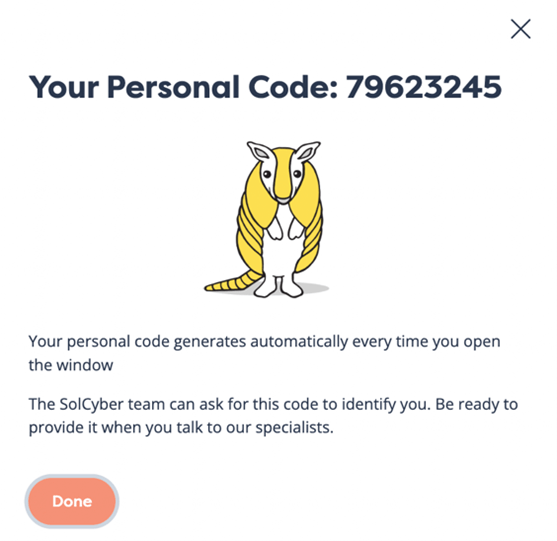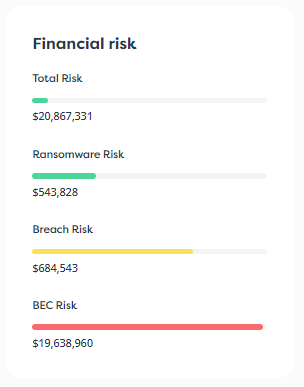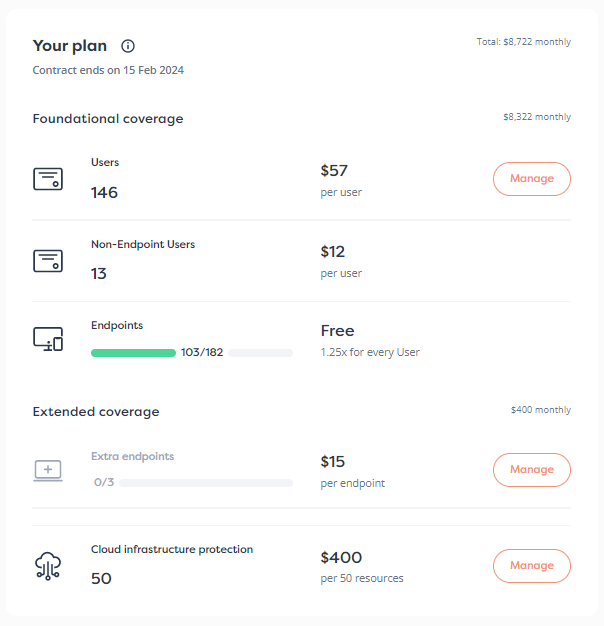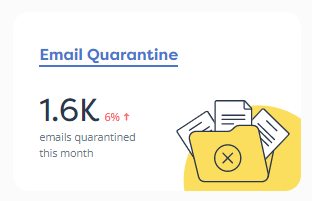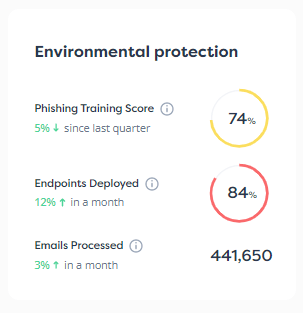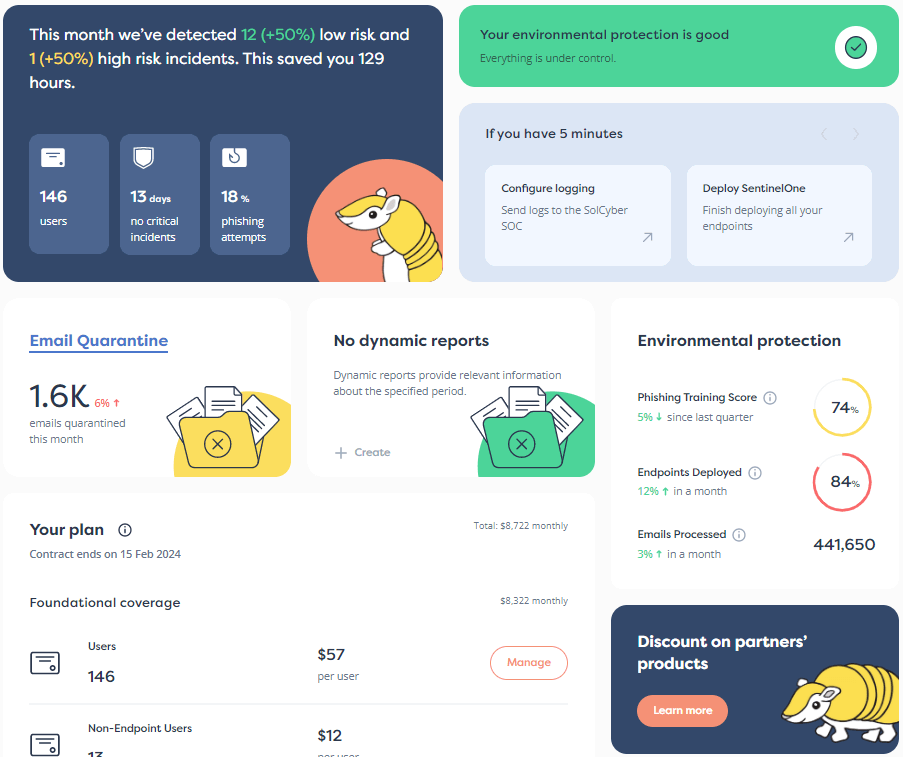Many small and mid-sized enterprises (SMEs) choose not to invest in cybersecurity early on, and it’s understandable why, given its impact to the bottom line. Cybersecurity tools, software and services can be expensive, and it’s time consuming to determine which tools you need. You need to weed through more than 3,500 vendors offering solutions and the process of finding the right vendors and onboarding them can take years. Fast-moving startups and SMEs neither have the expertise, time or the money.
Some SMEs don’t know where to start and are overwhelmed by the number of vendors and complex nature of cybersecurity. Others think the few free tools they’ve found online or the included antivirus subscription on their Dell laptop is enough to power them through the first few years of operation. This resonated across an alarming number of small business owners — 56% according to a CNBC and Momentive Q3 2021 Small Business Survey — said they are not concerned about being the victim of a hack in the next 12 months. These businesses choose not to take action, feeling they are too small to be the target of an attack.
While small businesses have many preconceived notions about cybersecurity — some right and some wrong — it’s important to get the facts straight. In reality, any business — large or small — needs some amount of protection against cyberattacks. The best way to think about cybersecurity is to view it as an investment against a business risk just like how you would have invested in security cameras for your retail shop.
Here is why every SME needs to invest in cybersecurity on day one.
1. You are a target
The security landscape has changed drastically in the last several years. Hackers are no longer exclusively targeting large businesses housing sensitive data. They’re looking for any company with a weak security infrastructure, which makes SMEs an easy target.
The Verizon Data Breach Investigations Report claimed that in 2021, 20% of breach victims were SMEs and a 2019 study by Keeper Security and the Ponemon Institute showed that 63% of SMEs experienced a data breach in 2019. And in case you need more proof that SMEs are being targeted by bad actors, a study conducted by CyberCatch in January of this year revealed that more than 30% of small businesses have weak points bad actors can exploit.
When it comes to attacks on small and mid-sized businesses, there are a number of ways hackers are breaking in. But according to the studies by CyberCatch and Verizon, the most common are:
- Phishing: Phishing is a type of social engineering attack that preys on human error. Phishing emails attempt to trick an employee into providing sensitive information, like login credentials, or clicking on a link that will download malware onto their devices.
- Spoofing: Much like phishing, spoofing is a social engineering attack that occurs when an attacker poses as a trusted source or executive to try to get sensitive details from an employee or gain access to a company’s private system.
- Sniffing: This type of attack occurs when a hacker is able to intercept a network’s traffic using a packet sniffer to access data that isn’t encrypted, allowing them to see sensitive assets and insecure communications.
- Misconfigurations and unpatched systems: When software is not patched on a regular basis, you leave holes in your environment that attackers can exploit to get into your network.
- Credential stuffing: An attacker, taking a user’s login credentials either from the dark web or a data breach, can then test those credentials on other accounts, taking advantage of the fact that many people re-use the same passwords.
These kinds of attacks can lead to a whole host of issues, particularly ransomware — the most common threat facing SMEs. Ransomware locks up your data or systems until you pay a ransom to decrypt the data. While hackers once focused on sensitive data, they now look for anything that could destroy a company’s reputation or tie up business-critical systems, meaning anyone using a company email address could be a target.
2. Data breaches are expensive
Cybersecurity can be expensive, especially when it’s not implemented strategically. However, the cost of cybersecurity software or partnering with an MSSP pales in comparison to the cost of a data breach. According to the IBM and the Ponemon Institute’s 2021 Cost of a Data Breach Report, data breaches in 2021 cost companies an average of $4.24 million and even small organizations (those with fewer than 500 employees) spent an average of nearly $3 million per incident.
That’s because the costs of a data breach extend beyond the price tag of the ransom or the cost of restoring your company’s data. Real costs include investigation, remediation, legal fees and settlements, compliance fines, lost business, PR and marketing costs, and even costs associated with reputational damage. These costs can continue for years, and many small businesses aren’t able to ever recover. Regardless of how expensive cybersecurity might seem, it’s much more expensive to not have cybersecurity.
3. Waiting until later can be more costly
When launching a business, budgets are small and spending needs to be prioritized and tightly scrutinized. So it might be tempting to hold off on cybersecurity until a later date when there’s more money in the budget. However, as you add more employees, devices, software and third-party vendors to your ecosystem, you’re opening yourself up to more risk. Just as importantly, this larger more complex environment requires more to secure as you may need to architect it from the ground up. This is commonly referred to as cyber debt — and it gets expensive.
By not investing in cybersecurity early on, you’re forced to go back and waste developer time later to rework code, institute new processes that take security into account, set new policies that incorporate security best practices, and potentially invest in new tools that make your organization more secure. Instead, you want to bake in security culture from the get-go including people, process and technology. This allows you to set precedence and design a cybersecurity strategy that will scale with your business as it grows. Although you might not deem cybersecurity a top priority when launching a business, it’s cheaper and easier to implement smart security practices from the start rather than to do it later on down the road.
4. Investors value a secure company
If your business is a startup or high growth company in need of funding, poor cybersecurity could cost you a key investor. Today’s investors look very closely at a company’s security posture as a part of their due diligence because they don’t want to fund a company with any major business risk factors, including cyber risk.
As they look at the potential return on their investment, they won’t likely want to invest in a company with significant cyber debt. As previously mentioned, the reputational damage of a data breach can be extremely costly, and investors know that without the credibility of an established organization, startups are even more vulnerable to a reputation hit.
Investors also don’t want to take any risks when it comes to a security breach. Not only do they open themselves up to financial risk but they could be named in a lawsuit — a risk that’s enough to spook them out of a deal. The SEC recently proposed new cybersecurity risk management rules for investors that would require them to “adopt and implement written cybersecurity policies and procedures designed to address cybersecurity risks that could harm advisory clients and fund investors.” So if a sound security posture isn’t already in place, they might be inclined to walk.
As an SME Make your cyber investment count
Rather than looking at cybersecurity as an expense, look at it as an investment that pays off the sooner you incorporate it into your environment. The risks and costs of a data breach or cyber debt only increase as you grow, so you’re better off investing in security tools, services, and best practices now, so your security grows with your company.
Fortunately, you don’t need $1B worth of cyber security tools or a full-blown security team to keep your organization safe. Instead, you can partner with a modern MSSP to keep costs — and risk — low.
SolCyber is not your average MSSP. We offer Foundational Coverage that includes a curated stack of leading technologies that keep your organization safe, so you don’t have to waste time weeding through the 3,500 security vendors, guessing at which tools are right for you. We also offer 24/7/365 monitoring, detection and response, so we’re likely fixing security issues by the time you’re even notified of them.
If you’re interested in getting your business off to a secure start, drop us a note and let’s chat.






















